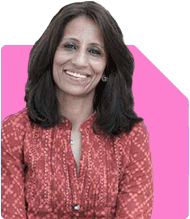Please review my MF Portfolio Sir....Bandhan Small Cap Fund - 11000, Parag Parikh Flexi Cap Fund -15500, Kotak emerging equity Fund - 7000, Tata digital Fund - 7000, Motilal Oswal Midcap Fund - 12000, HDFC Balanced Advantage Fund - 12500, With setp up of 10% every year. is this portfolio Good ?? should I change something ?? Also, I want to start another 5000 SIP, which fund should I go for ?. My age is 28 yrs My goal is wealth creation, i can invest for long term. As of now I don't have any urgency
Ans: I’m glad to see you’ve taken active steps towards wealth creation. At 28, with a long-term investment horizon and no immediate need for liquidity, you’re well-positioned to build substantial wealth through disciplined investments.
Let’s evaluate your portfolio and offer insights for further improvements, including recommendations for your new SIP.
Assessing Your Current Portfolio
Your portfolio reflects a diverse range of funds, which is essential for reducing risks and optimizing growth. Here's a detailed evaluation of each component:
1. Bandhan Small Cap Fund – Rs 11,000
Small-cap funds have high growth potential but are also highly volatile. It’s great for wealth creation over the long term, but ensure you're prepared for volatility in the short term.
You’ve allocated 16% of your current SIP to small caps. That’s reasonable given your age and long investment horizon.
2. Parag Parikh Flexi Cap Fund – Rs 15,500
This is a flexi-cap fund, which means it can invest in large, mid, and small caps based on market conditions. These funds offer a good balance of risk and reward.
With about 22% of your SIP allocated here, it adds diversification to your portfolio. This fund provides the flexibility to adjust to market conditions, which can be a key strength.
3. Kotak Emerging Equity Fund – Rs 7,000
Mid-cap funds like this have the potential to offer high returns with moderate risk. Mid-caps often strike a balance between the stability of large caps and the growth potential of small caps.
Your allocation of 10% to mid-cap is fine for your long-term goal, as these funds can generate wealth if held for 7-10 years.
4. Tata Digital Fund – Rs 7,000
A sectoral fund like this focuses on the digital or technology sector, which can be lucrative. However, such funds tend to be highly volatile and depend on the sector's performance.
While sectoral funds can provide high returns, their risks are high due to concentrated exposure. It's a good idea to limit your exposure here, and you’ve done well by keeping it at around 10%.
5. Motilal Oswal Midcap Fund – Rs 12,000
Another mid-cap fund in your portfolio, this allocation increases your exposure to mid-caps. While mid-caps have good growth potential, too much concentration in this category can amplify risk.
You’ve allocated 17% to mid-caps overall, which is slightly on the higher side. You may want to reduce this exposure slightly to balance your risk.
6. HDFC Balanced Advantage Fund – Rs 12,500
Balanced Advantage Funds (BAFs) dynamically manage the portfolio between equity and debt. This ensures lower volatility while giving reasonable returns.
Having 18% of your portfolio in a BAF adds stability and cushions against market fluctuations. This is an excellent choice for long-term wealth creation with moderate risk.
Diversification and Risk Management
Your portfolio is diversified across different types of equity funds—small-cap, mid-cap, flexi-cap, and sectoral funds. However, there’s a concentration of mid-cap and small-cap exposure, which could increase risk during market downturns. Since you are aiming for long-term wealth creation, I recommend a more balanced allocation.
Steps to Improve Diversification:
Reduce Sectoral Exposure: The Tata Digital Fund's high concentration in one sector can increase risk. You may want to limit sectoral funds to 5-7% of your overall portfolio.
Balance Mid-Cap Exposure: You’ve invested in two mid-cap funds. Consider reducing one to moderate your overall risk exposure.
Adding Another SIP of Rs 5,000
You mentioned starting a new Rs 5,000 SIP. Given your long-term horizon and focus on wealth creation, here’s what I suggest for further diversification:
1. Large-Cap Fund
Adding a large-cap fund will bring more stability to your portfolio. Large-cap funds tend to be less volatile and provide consistent returns, especially during market downturns.
This can act as a safety net, balancing the volatility of your small and mid-cap funds.
2. Hybrid or Dynamic Allocation Fund
If you're looking for more stability, you might consider adding a balanced or hybrid fund to your portfolio. These funds invest in both equity and debt instruments, which can stabilize your portfolio during market fluctuations.
A hybrid fund would complement your existing BAF and reduce overall portfolio risk.
3. International Equity Fund
You can also consider diversifying internationally by adding an international equity fund. These funds provide exposure to global markets and help diversify country-specific risks.
This can help balance the portfolio if Indian markets face periods of stagnation.
Disadvantages of Index and Direct Funds
Since you've opted for actively managed funds, I want to reinforce that you're on the right track. Index funds, although lower in cost, are passive and do not have the potential for outperformance in dynamic markets. In contrast, actively managed funds offer better opportunities as professional fund managers constantly analyze the market to maximize returns.
Also, it's wise to invest through a Certified Financial Planner (CFP) who can guide you based on your financial goals and risk profile. While direct funds may save on expense ratios, they often lack personalized advice, which can cost you in the long term.
Final Insights
Your current portfolio has a solid foundation for long-term wealth creation, with a strong emphasis on small and mid-cap funds for growth. However, it would benefit from some adjustments to balance risk and improve diversification.
Consider reducing your sectoral and mid-cap exposure slightly to manage volatility.
Adding a large-cap or hybrid fund to your new SIP will provide more stability.
Investing for the long term with periodic reviews will ensure you stay aligned with your goals.
Stay disciplined with your investments, increase your SIPs regularly as planned, and avoid frequent changes. With a long-term vision and the right fund selection, your portfolio can grow significantly over time.
Best Regards,
K. Ramalingam, MBA, CFP,
Chief Financial Planner,
www.holisticinvestment.in
https://www.youtube.com/@HolisticInvestment
.jpg)



























